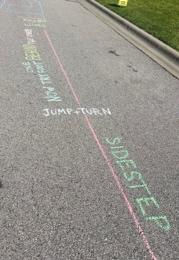Occupational Therapy for Cerebral Palsy
- Courtney Wilson, OTS
- Nov 7, 2018
- 1 min read

The symptoms of cerebral palsy can have a profound impact on a child’s everyday life. Occupational therapists can increase a child’s independence, improve their ability to learn and play, enhance their self-esteem, develop a routine, and improve their quality of life. For parents/caregivers, occupational therapists can help decrease the physical demands, reduce stress, provide a sense of security, and allow them to watch their child succeed.
Occupational therapy can help with the following problems related to each type of cerebral palsy:
Spastic: This type can lead to difficulty with dressing, toileting, eating, drinking, writing, and holding objects due to the jerky movements and muscle stiffness.
Athetoid: Troubles with grasping, posture, swallowing, drooling, and speaking are hard due to the child not being able to regulate their muscle tone
Ataxic: Children with ataxic CP often have a difficult time with precise movements and present with tremors. This could inhibit tasks like writing or eating that require precise finger movements.
Occupational Therapy interventions focus on:
Fine motor skills
Bilateral coordination
Upper body strength and stability
Crossing midline
Visual motor skills
Visual perception
Self-care skills
Incorporation of assistive devices
Constraint Induced Movement Therapy
Sensory Integration Therapy
Reference: Occupational Therapy for Cerebral Palsy - Improve Daily Skills. (n.d.). Retrieved from https://www.cerebralpalsyguide.com/treatment/occupational-therapy/




Comments